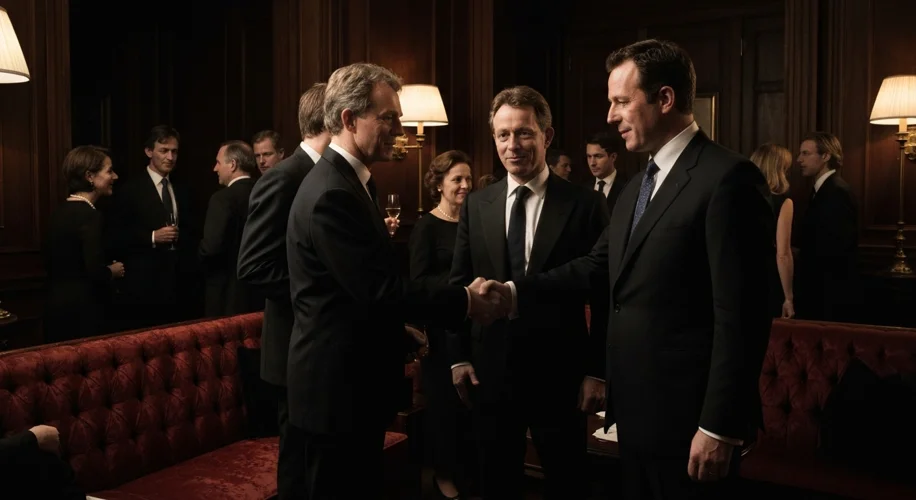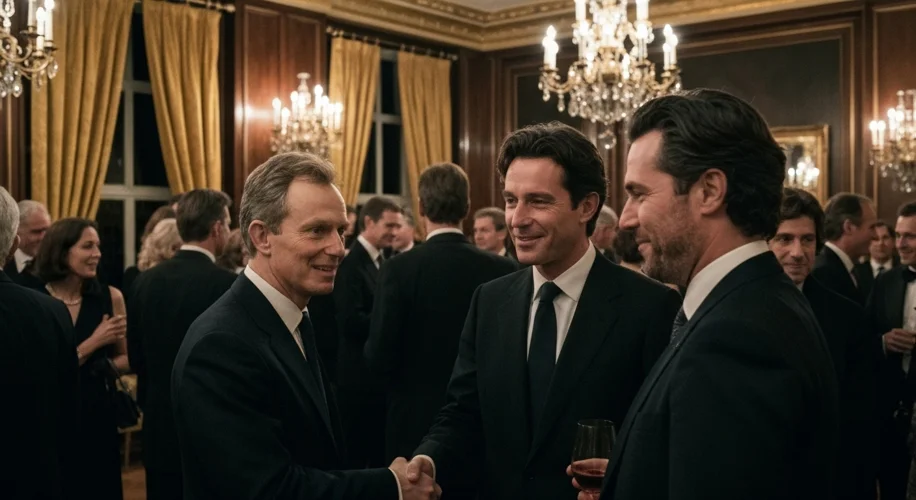The year is 1997. The air in Britain crackles with the energy of a new Labour government, led by the youthful and charismatic Tony Blair. Hope for a “New” Britain is palpable, and the nation’s gaze is fixed on Downing Street. Yet, beneath the surface of this optimism, less visible currents were at play, involving figures whose names would later become synonymous with unspeakable depravity. One such figure was Jeffrey Epstein.
Long before the world became aware of the full horror of his crimes, Epstein cultivated an image of a successful financier, a man who moved with ease through the glittering spheres of wealth and influence. He was a regular fixture at exclusive parties, a patron of the arts, and a frequent traveler on private jets. It was in these circles, often far from the public eye, that he encountered many of the powerful and the famous.
One such encounter, now drawing historical scrutiny, was a meeting between Tony Blair and Jeffrey Epstein. This wasn’t a clandestine rendezvous, but a more public, albeit brief, interaction that occurred when Blair was Prime Minister. The meeting, reportedly lasting only a few minutes, took place at a reception at the home of a prominent businessman. For Epstein, such an opportunity to be in the presence of a world leader would have been invaluable, a testament to his ability to infiltrate the highest echelons of society.

To understand the historical significance of this meeting, we must peel back the layers of public perception that existed at the time. In the late 1990s and early 2000s, Epstein’s alleged criminal activities were largely unknown to the public. He had been charged with soliciting a minor in Florida in 2005, and it was this legal proceeding that began to chip away at his carefully constructed facade. However, for years prior, he operated with a degree of impunity, his reputation as a financier and his connections to influential figures shielding him from widespread suspicion.
Epstein’s network was vast and complex. He cultivated relationships with billionaires, royalty, politicians, and scientists, often offering them access to his private island, “Little St. James,” or arranging private jet travel. The allure for many of these individuals was likely a combination of Epstein’s wealth, his purported connections, and the exclusivity he offered. For Epstein, these associations were a crucial part of his scheme, providing him with a veneer of respectability and access to a pool of potential victims.
The meeting between Blair and Epstein, therefore, is not merely an anecdote; it’s a historical snapshot of how deeply intertwined powerful figures could become with individuals who, unbeknownst to many, were engaged in monstrous activities. It raises critical questions about vetting, due diligence, and the nature of celebrity and influence in the pre-digital age, when information was not as readily accessible or verifiable as it is today.
The consequences and impact of such associations, even if fleeting, are profound. For Epstein, these high-profile encounters helped to solidify his position and provided him with a shield against scrutiny. For public figures like Tony Blair, the association, however brief, can cast a long shadow, raising questions about judgment and the circles they choose to inhabit. It underscores the historical challenge of identifying and holding accountable individuals who operate in the shadows, using their influence and wealth to evade justice.
Analyzing this historical intersection requires a nuanced perspective. It’s easy to judge past events through the lens of present knowledge, but history demands we understand the context of the time. In the late 1990s, the scale of Epstein’s predation was not widely understood. The meeting itself might have been seen by those involved as a chance encounter at a social gathering, a brief handshake in a sea of faces. However, as more information has emerged, the implications of such proximity to a figure like Epstein have become starkly clear. It serves as a cautionary tale about the importance of vigilance and the need for robust systems to prevent powerful individuals from exploiting those around them, regardless of their social standing or perceived respectability. The historical record, in this instance, reveals a disturbing truth about the hidden costs of access and the enduring struggle for accountability in the corridors of power.

